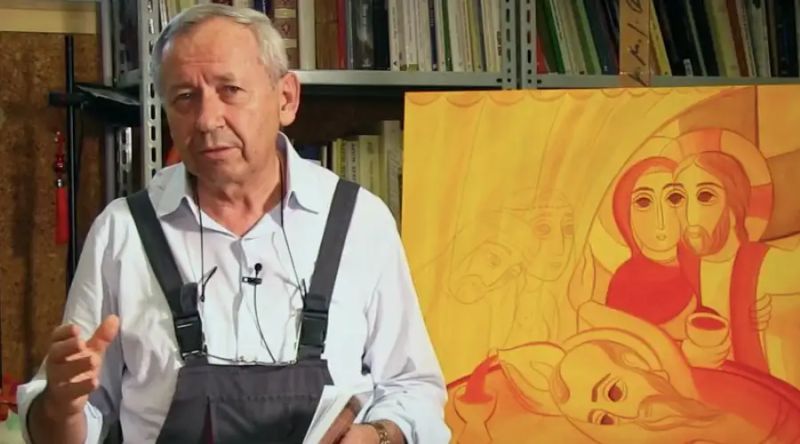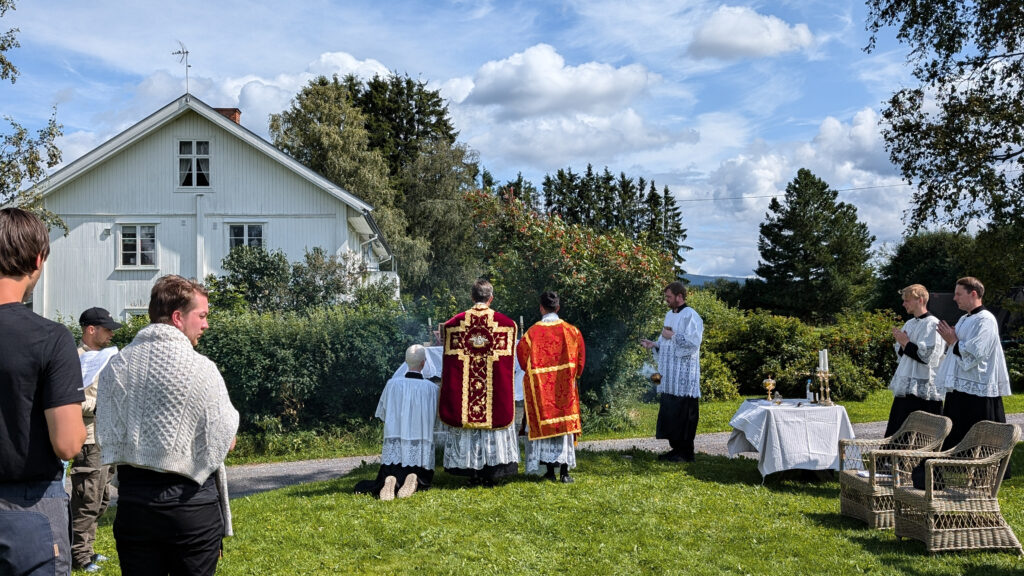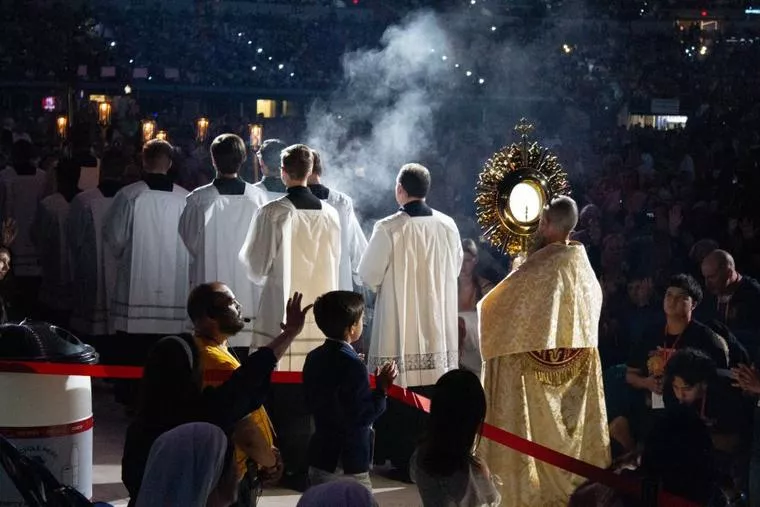CNA Staff, Oct 6, 2023 / 09:47 am (CNA).
Claim: Controversial priest Father Marko Rupnik’s artwork is featured prominently by several Catholic institutions — including the website of the ongoing Synod on Synodality.
CNA finds: Art associated with an institute run by Rupnik, and likely created at least in part by him, was indeed featured publicly on the synod’s website.
Breakdown: Former Jesuit priest Father Marko Rupnik has been at the center of controversy over the last several months over what Jesuit leaders described as “highly credible” allegations that he engaged in serial physical, sexual, and psychological abuse of numerous religious sisters. In June he was dismissed from the Society of Jesus for “stubborn refusal to observe the vow of obedience.”
Beyond the priesthood and those recent controversies, Rupnik is known for his prolific involvement with religious artwork, much of which has been featured publicly in various Church contexts — including, recently, the website of the 16th Ordinary General Assembly of the Synod of Bishops, or the Synod on Synodality.
Media have reported on the “outrage” from Catholics on social media over the synod website’s use of at least one work of art made by Rupnik.
That art, a depiction of the adoration of Christ by the Magi, was used on the synod website as late as Sept. 26, according to archived pages of the website reviewed by CNA.
The image is that of a mosaic created for the Almudena Cathedral in Madrid, Spain, in 2011. It is listed on the website of Centro Aletti, the art institute in Rome that was until recently run by Rupnik.
Though Centro Aletti does not list the authorship of the mosaics listed on its website, it seems likely that Rupnik was the artist who installed the mosaic in question — it mirrors the style of mosaic work for which he is known, and several blogs and/or websites identify him as its creator, though without attribution.
That being said, CNA could not confirm that the mosaic was created directly by Rupnik or else by someone associated with the Aletti institute. Aletti’s listing of the artwork identifies it as among the “more than 200 works” made by the “Art and Architecture Workshop of the Aletti Center.”
Both the communications manager of the General Secretariat of the Synod of the Bishops and Paolo Ruffini, president of the synod communications commission, declined CNA’s request for comment.
Reached for comment via email, an official with the Almudena Cathedral told CNA that “the mosaics that we have in the [church] are all of them the work of the Centro Aletti.”
“Mosaic works don’t have signatures,” the official said, “they’re the work of a group of persons. On the other hand, when the mosaics were made in this cathedral, the artistic director of the Centro Aletti was the Jesuit Marko I. Rupnik.”
Queries to Centro Aletti in both English and Italian went unreturned. A query to the email address associated with the synod website also went unreturned.
Verdict: The synod’s website until recently featured at least one image of a mosaic that was apparently created by Father Marko Rupnik. Though CNA could not totally confirm the mosaic’s provenance, it appears likely that the mosaic was indeed created by Rupnik himself, as it is identical in style to other mosaics for which he is well known, and the cathedral confirmed that they were created by Centro Aletti when he was leading it, making his direct involvement highly likely.
We rate this claim true.




